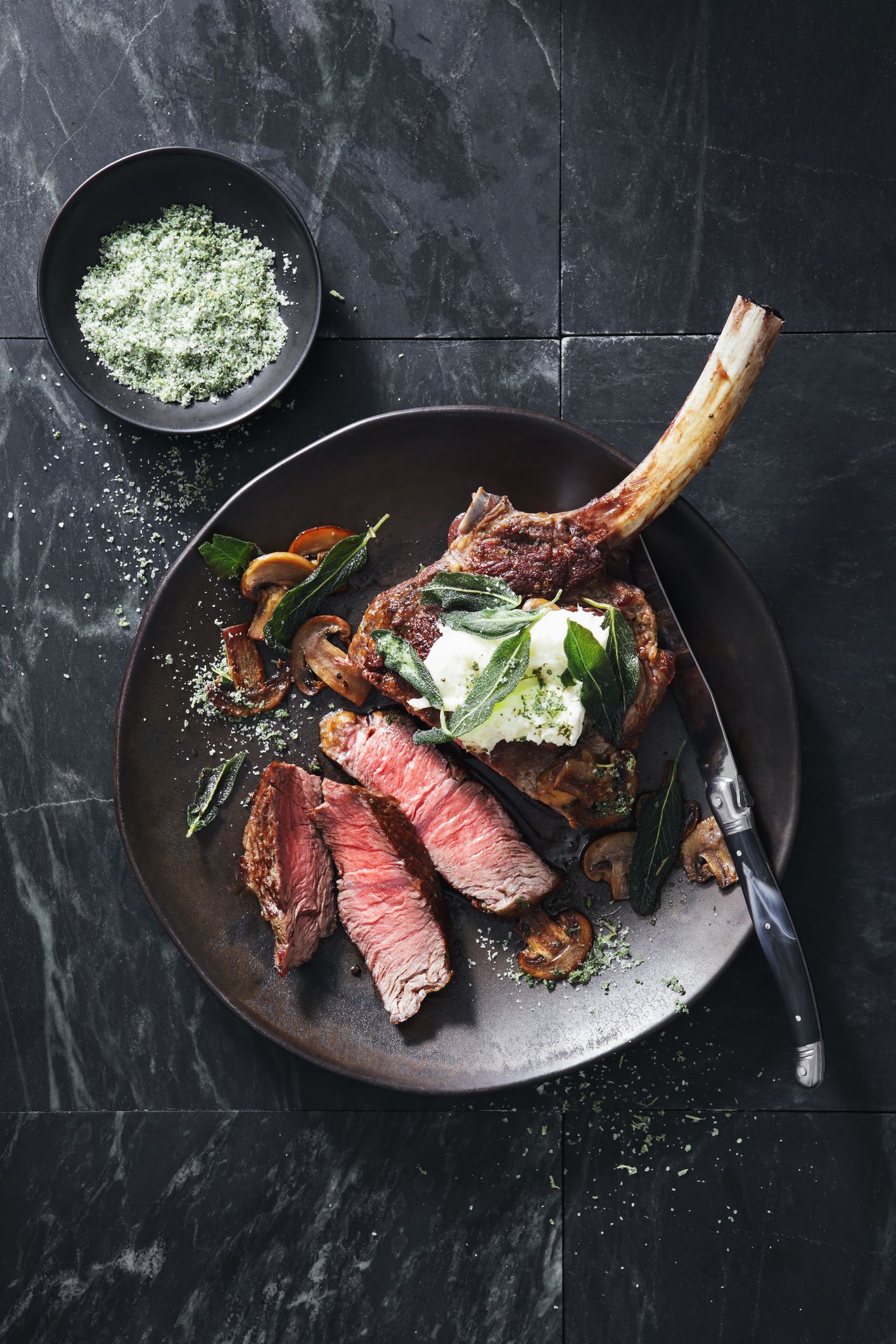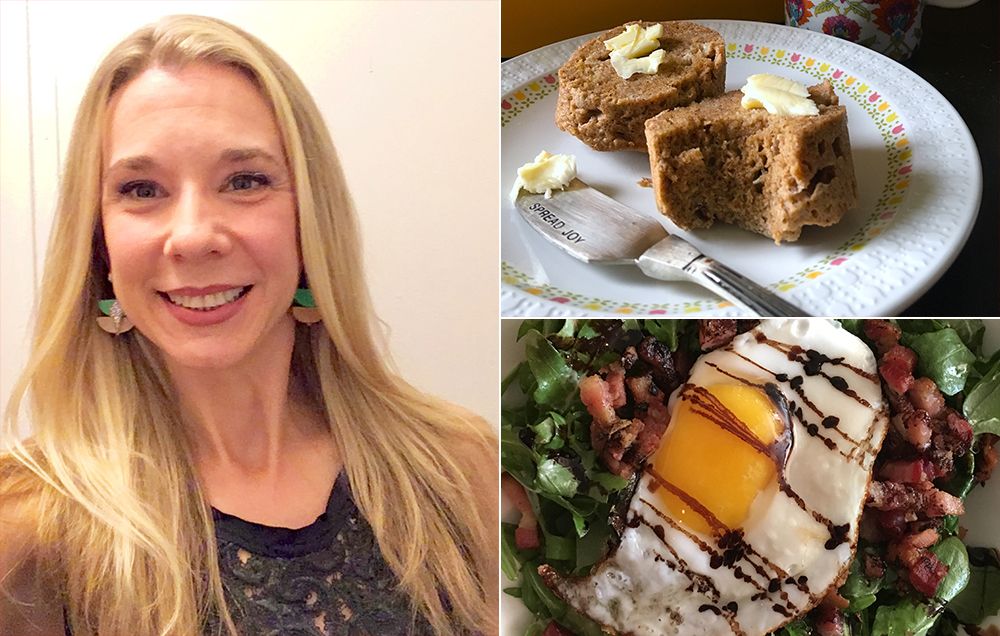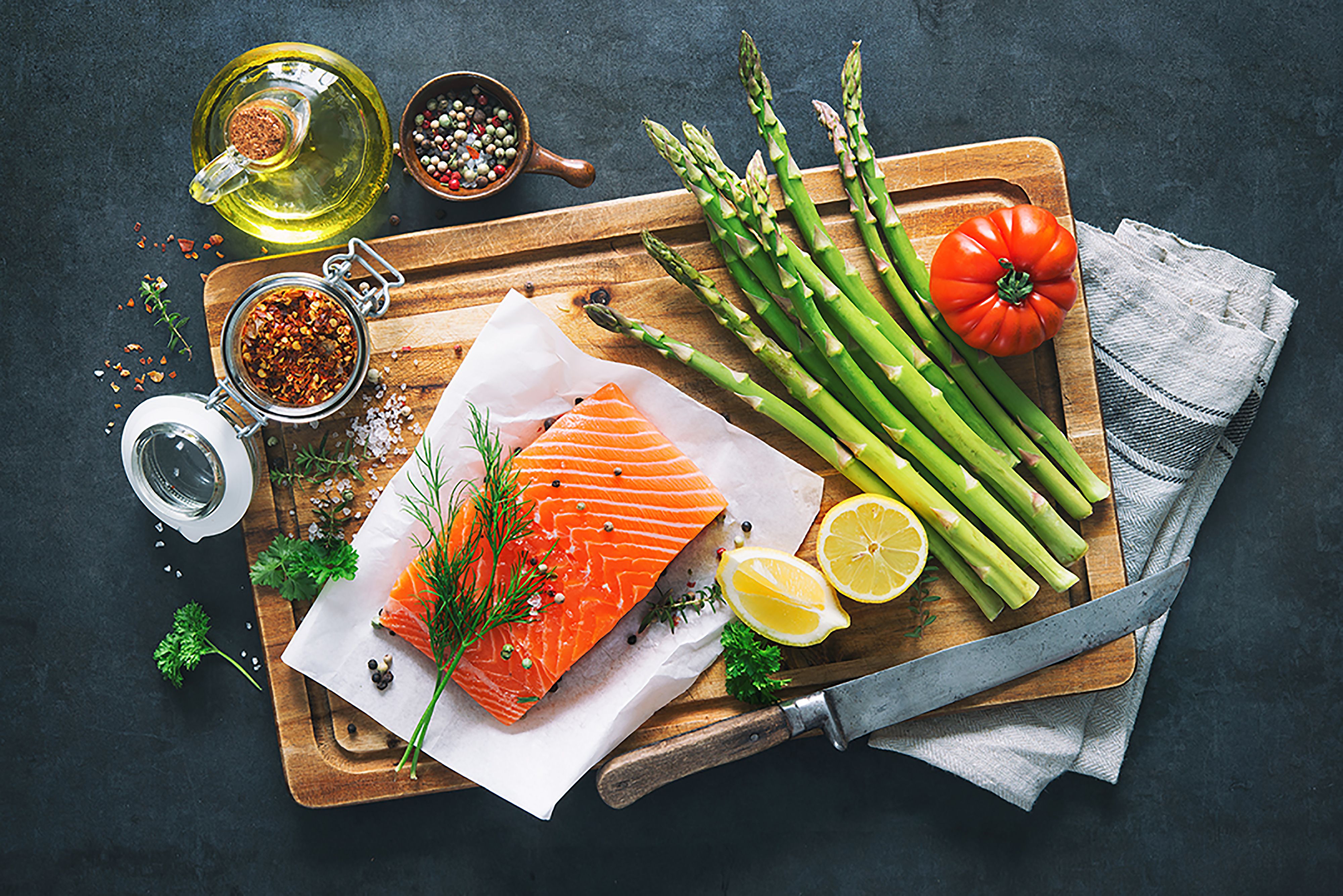Athough eliminating 🥖 is the hardest goodbye of all, low-carb diets have been the rage for quite some time now. There are a few different plans you can follow. Keto is a major one that’s yielding quick, drastic weight-loss results for tons of people, and Paleo is another trendy plan. And then there are the tried-and-true low-carb classics, like the Atkins diet (this might be the first time you’ve heard that one in a while).
Both keto and Atkins are actually pretty similar when it comes to the amount of macronutrients (fat, carbs, protein) you should be consuming day to day, but what are the actual differences between the two—and which would be a better fit, nutritionally?
Of course you could just make your choice based on how much pasta you’re able to eat, but nutrition experts do believe that one is a little bit better than the other for a few reasons. Two dietitians—Natalie Rizzo, MS, RD, a New York City-based registered dietitian, and Susan Piergeorge, MS, RDN, nutrition education manager for Rainbow Light and Natural Vitality CALM—give the lowdown on these high-fat, high-protein, low-carb eating styles. Their verdict, ahead.
The keto diet
“The ketogenic diet is a high-fat, low-protein, and low-carbohydrate diet that was originally developed to treat epilepsy,” explains Piergeorge. That’s right, historically, it wasn’t prescribed for extreme weight loss but to reduce blood sugar—you can hardly have any sugar on the diet—which during the 1920s was thought to lower the risk of seizures. Now, the diet is a huge trend for weight loss as well as treating type 2 diabetes, Piergeorge adds.

Here’s the basic formula: Fat accounts for 70 to 95 percent of the keto diet, while protein makes up 5 to 20 percent, and carbohydrates just 5 to 10 percent of what you’re eating. It tends to bring on dramatic weight loss because you’re consuming less than 50 grams of carbs a day on keto, ideally.
At this ratio, the body starts to burn fat. “Once the body’s glucose stores become depleted, ketone bodies are produced (these are products of fatty acid oxidation in the liver) and provide an alternate source of energy,” Piergeorge explains. Basically, fat, instead of sugar from carbs, becomes your body’s main energy source—and when you’re burning fat, you lose weight.
What you can and can’t eat on the keto diet
Once you read this, you may be tempted to devour an entire charcuterie platter. But the focus really is on healthy fats and lean meats, and supplementing those with fruits and vegetables in moderate amounts, since those are technically considered carbs.
Keto-friendly foods:
- Eggs
- Seafood
- Lean meats
- Healthy fats (including nuts, olive oil, and avocado)
- Green, leafy veggies
- Lower sugar, high-antioxidant fruits (like dark berries or pumpkin)
Foods to avoid on keto:
- Bread
- Pasta
- Potatoes
- Starchy veggies
- Sugar and other processed foods
Keto pros and cons
There are some potential health benefits you could experience by going keto. At the same time, the diet can have side effects, as explained below.
Health benefits of keto:
- You may experience weight loss after starting keto.
- It may also lower your blood sugar in the interim.
- You’re consuming good fats, which are high in omega-3s (which have proven to be beneficial to heart health, skin, and brain health).
Cons of keto:
- Carbs, which are also found in foods like fruits and veggies, and whole grains, are what fuel you when you work out, for the most part. Because of that, you may experience sluggishness and less motivation to exercise.
- The keto lifestyle may not be sustainable; it’s difficult to stick with this diet because it’s restrictive.
- Because you’re consuming less fruits and veggies and whole grains, you may have less fiber in your diet, which can cause constipation.
- At the beginning of switching to keto, you may not feel like yourself. The “keto flu” is common when your body is going into ketosis, and symptoms include headaches, nausea, and fatigue.
- You may be deficient in certain nutrients, like B vitamins, calcium, iron, magnesium, and zinc, because you’re eliminating macros and some fruits and veggies, as well as whole grains.
Who keto might be right for
Well, if you’re trying to lose weight and have tried many other avenues to do so, eating keto may be effective.If you’re diabetic or pre-diabetic, it may also help lower your blood sugar since you’re cutting out all that sugar.

And, Rizzo adds, it could be a fit for some athletes, too. “Certain elements of the keto diet, like the emphasis on healthy fats and protein, is a good recommendation for active individuals who put a lot of wear and tear on their muscles and need more calories,” Rizzo says. You have to make sure the fats you choose are healthy, omega-3-rich fats instead of saturated fats, and that you’re choosing lean sources of protein.
Remember that before making a major lifestyle change, though, it’s best to check it out with your medical professional first. You don’t want to end up feeling worse after making this dietary switch instead of better.
The Atkins diet
Though the Atkins diet basically peaked in the late ‘90s (didn’t we all?), it was actually developed much earlier by Robert C. Atkins, a doctor who published his first book, Dr. Atkins’ Diet Revolution, in 1972, and then his most popular bestseller, Dr. Atkins’ New Diet Revolution, in 1995. Dr. Atkins intended on it being a way to cut carbs, of course, and reduce high blood pressure.
Basically, with Atkins, you generally have two paths you can choose from: Atkins 20 and Atkins 40, based on the grams of carbs you should be eating per day. It’s also low in carbs, higher in fat, and higher in protein, which ideally should prompt the body to burn fat.

If you’re trying to shave off more than 40 pounds, you’d eat about 60 to 70 percent fat, 20 to 30 percent protein, and 5 to 10 percent carbs on Atkins 20 (you’re allowed 20 grams of carbs a day), Rizzo explains.
If you would like to lose less than 40 pounds, go with Atkins 40. It consists of 55 to 65 percent fat, 20 to 30 percent protein, and 10 to 15 percent carbs. You’re allowed 40 grams of carbs per day, which is a bit easier when you’re tallying up macros. There’s also Atkins 100, which is a slightly simpler plan that allows for 100 grams of carbs per day.
What you can and can’t eat on the Atkins diet
Like keto, Atkins focuses on lean protein, as well as healthy fats. “Depending on the plan individuals follow, the plan emphasizes consuming protein at least three times per day in four to six ounce portions including meat, seafood, poultry and eggs,” Piergeorge explains. “Fats are encouraged, you want at least 3 tablespoons per day in the form of butter, mayonnaise, or olive or other vegetable oils,” she adds.
Atkins-friendly foods:
- Lean meats
- Eggs
- Seafood
- Nuts
- Cheese (no more than 3 to 4 ounces per day)
- Non-starchy veggies
- Unsweetened beverages
Foods to avoid or limit on the Atkins diet:
- Fruits (but you can re-introduce them after a while)
- Whole grains
- Legumes
- Eliminate processed foods, sugar, and refined grains like bread and pasta
- Starchy veggies
Health benefits and side effects of the Atkins diet
Just like keto, there are potential health benefits of the Atkins diet, as well as side effect you should be aware of before you try it.
Health benefits of Atkins:
- You may lose weight while following a low-carb diet and eating more protein and fat.
- It may help lower your blood sugar as well.
- You have some flexibility with the amount of carbs you can consume—you’ll be able to eat fruits, veggies, and whole grains, in moderation, so your fiber intake might be higher than it would be with keto.
Cons of Atkins:
- It may help you lose weight and lower your blood sugar in the beginning, but might not be sustainable in the long run.
- You still may have nutritional deficiencies, like you might with keto, in the form of fiber, B vitamins, antioxidants, and even calcium, if you’re not eating much dairy on the diet.
- If you’re following along with Atkins strictly and buying their products (protein bars, breads, etc.), it can get expensive.
- It’s easy to eat tons of saturated fat when you’re allowed a higher fat diet, which is the opposite of what’s healthy in terms of fat intake.
Who Atkins might be right for
Like keto, it may help an individual drop some serious pounds if it’s done the right way. And it can help lower your blood sugar if you have type 2 diabetes or are pre-diabetic.
Also, counting macros can be a good way to really boost awareness of what you’re putting in your body, especially if you are an athlete and want to make sure you’re fueling properly for training. But, Piergeorge argues, a highly restrictive diet doesn’t work for everyone, and you should consult a doctor or nutritionist before beginning this strict regimen.
Recap: the biggest similarities and differences between keto and Atkins
Keto and Atkins may seem like the same thing when it comes to eating more fat and protein and less carbs and sugar, but there are some nuances you should keep in mind.
Keto and Atkins similarities:
- The macro ranges you’ll be including in your diet are pretty similar, between fat, protein, and carbs.
- The allowed foods on keto and Atkins are similar: lean meats, seafood, some dairy products, and some green, leafy vegetables.
- Both keto and Atkins cut back majorly on carbs, sugar, and processed food in order to send your body into a state of ketosis.
- They both encourage fat loss and can potentially lower blood sugar.
Keto and Atkins differences:
- Keto allows on average 70 to 90 percent fat, 5 to 20 percent protein and 5 to 10 percent carbohydrates, while Atkins allows for 55 to 75 percent fat, 20 to 30 percent protein, and 5 to 15 percent carbohydrates. Close, but not identical macros.
- Atkins allows for more carbs than keto. (Keto tends to eliminate all but 5 percent of carbs and doesn’t allow you to eat much fruit at all.)
- Keto is higher in fats, while Atkins emphasizes proteins as a major macro to focus on.
- Atkins has different levels based on how many carbs you’re looking to consume per day, while with keto, you have to go all in.
Is keto or Atkins better overall? The verdict…
Both keto and Atkins are highly restrictive diets, the experts point out, so it may be difficult to sustain these major lifestyle changes and cut out carbs for a long period of time.
Keto becomes tricky because it can be an unhealthy diet if you don’t do it correctly, and consume too many unhealthy fats (we’re talking cured meats instead of avocado). “I wouldn’t necessarily recommend the keto diet because it has such a high percentage of fat and a low percentage of carbs. It’s unsustainable in the long run, and there is too much of a tendency to eat a lot more saturated fat than you need,” Rizzo says.

If she *had* to choose between these two highly restrictive eating regimens, she’d choose Atkins because it allows for more carbs (in the form of fruits, veggies, and whole grains) and ultimately more leeway in your eating and more balance in your diet.
Atkins also gives you more wiggle room because you can choose the 20, 40, or 100 option for allotment of grams of carbs per day. That way, you can introduce a little more pasta into the mix if that’s how you want to roll.
But it’s ultimately your decision—you’ll be making the dietary changes so they have to fit with your lifestyle and make you feel happy and healthy. Changing your diet (and especially eliminating the majority of carbs from your diet) is not easy, and may take some trial and error, so it’s important to thoroughly research all of your options.
Source: Read Full Article